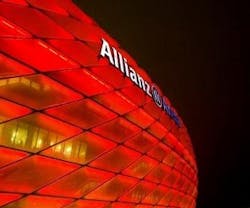Colors for Contemporary Commercial Architecture
White stopped being the official color of architecture a while ago. According to a study conducted by researchers at the Polytechnic University of Valencia (UPV, Spain), new buildings have now been transformed and fragmented and they display movement and innovation thanks to the versatility of color.
Modern architecture has wrongly been identified with the exclusive use of the color white but it is not like this: it is just a myth," says SINC Juan Serra, lecturer at the UPV's Institute for Heritage Restoration. "In recent decades, color has been reintroduced into architectural design and has turned out to be a useful tool in expressing versatility, which signifies change, lack of permanence and ability to adapt to new requirements."
Color transforms buildings in the sense that they change their appearance and allow that they are perceived differently. When moving elements are placed on the front of buildings for example, the angle and intensity of light vary. This occurs with Jean Nouvel's Agbar Tower in Barcelona. The use of aluminum plates and glass slats alters the buildings chromatic balance depending on the time of day or year. In addition, at night-time, LED technology generates light images over the entire facade using a sophisticated hardware and software system.
The debate has moved on to commercial architecture. "It seems that there is a tendency towards the use of white and grey on the front of houses, for example. The public perceives these colors as more glamorous whereas years ago differently colored houses were in demand as they were linked to the historicistic fantasy in the collective imagination," claims Serra, who also destroys the myth that white is related to Mediterranean buildings: "Most of the time this comes from the whitewash that was applied mainly for hygiene reasons."
